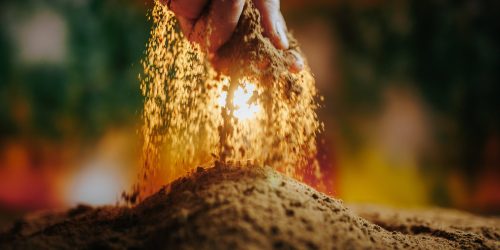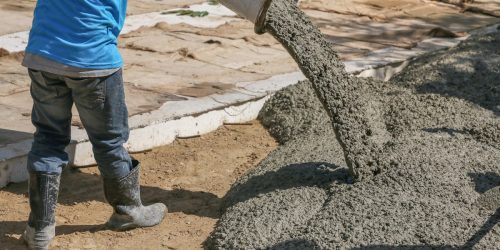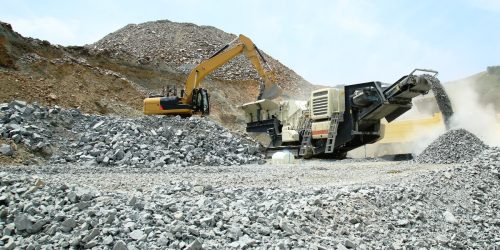
Silica sand is like a hidden treasure chest waiting to be discovered by the construction industry. With its vast array of benefits, from strength and durability to versatility and cost-effectiveness, unlocking the potential of silica sand is like finding the key to a whole new world of possibilities. In this comprehensive guide, we’ll delve into the depths of silica sand and uncover its hidden secrets, revealing how this unassuming material can help take your construction projects to the next level.
What is Silica Sand?
Silica sand is a mineral that comes from the silicon dioxide group of minerals. It’s also known as quartz sand, and it’s the most common mineral on earth. The word “silica” comes from the Latin word for “flint.”
The silica is usually in the form of quartz crystals–tiny hexagonal prisms with flat sides–but there are other kinds of silicates found in nature too, like mica and feldspar (which make up much of what we call granite). Some types of volcanic glass also contain large amounts of silicates; these are called obsidian when they’re black or greenish-black like obsidian glasses found at Yellowstone National Park.
LOOKING FOR THE BEST SUPPLIER IN SOUTH FLORIDA?
YOU FOUND US, ASR MATERIALS.
Where Does it Come From?
Silica sand is a type of sand that is composed of tiny granules of quartz, a mineral that is abundant in the Earth’s crust. It is commonly found in coastal areas, riverbeds, and deserts. What makes silica sand unique is its high silica content, typically around 95%, which gives it exceptional strength and durability, as well as other advantageous properties.
The formation of silica sand is a natural process that can take thousands of years. It begins with the erosion of rocks containing quartz, which are broken down into tiny fragments by the forces of wind and water. Over time, these fragments are carried downstream by rivers and deposited in coastal areas or other bodies of water. The constant pounding of waves against the shoreline further breaks down the quartz particles, smoothing and refining them into the uniform, rounded grains that characterize silica sand.
In addition to its natural formation, silica sand can also be produced artificially through various processes such as crushing, washing, and drying. These methods are commonly used to create high-purity silica sand for applications such as glassmaking, electronics, and chemical production.
Regardless of its origin, the unique properties of silica sand make it an invaluable resource for the construction industry. From concrete and asphalt to brick and tile, silica sand is an essential component in many building materials, providing strength, durability, and resistance to weathering and erosion.
Different Types Of This Silicon Oxide Material

There are many different types of silica sand. The most common type is called “quartz sand.” It’s made up of tiny crystals that are clear and yellowish-white, and it has a hardness rating of 7 on the Mohs scale—that means it’s pretty darn hard. Quartz sand is used in glassmaking and other industrial processes, but it’s also great for making sand castles!
Another type is called “feldspar sand,” which is a little softer than quartz sand. The grains might look like they have a bit of glitter, but rest assured: they’re just reflecting light! Feldspar has a hardness rating of 6 on the Mohs scale.
There are also two types of silica that you can find on beaches: “halite” (also known as rock salt) and “calcite.” Halite has a hardness rating of 1.5 on the Mohs scale, so it’s pretty soft—you might even be able to eat it if you wanted to! Calcite has a hardness rating of 2 on the Mohs scale, and some people use calcite as an ingredient in their cooking because it helps reduce blood pressure and the risk of heart attack. It’s also used in some medicines and dental products. If you find any of these types of sand on your beach, you can use them to build castles and other structures with friends or family!
How Is Silica Sand Used?
You can find silica sand in a lot of places. From concrete and asphalt to glass and ceramics, it’s used for a variety of purposes. In addition to these applications, many more industries rely on silica for their products:
- Water filtration systems use silica to remove contaminants from water before it reaches homes or businesses
- Construction companies use silica in mortar, concrete mixers, and other building materials; they also use crushed rock as an aggregate in asphalt roads (like those found in your neighborhood)
- Electronics manufacturers use silicon dioxide as an insulator between layers of semiconductor chips to prevent electrical shorts when they’re assembled into computers or other electronic devices
- Agriculture companies use finely ground silica as an additive with fertilizers so plants can absorb nutrients more efficiently
Construction Industry
Silica is a type of sand that is mined and that we supply for use in the construction industry. It is made up of silicon dioxide, which means it has a high percentage of silicon. This sand helps to make concrete stronger and more durable, which makes it perfect for construction sites where there are high demands on the strength of concrete.
Silica sand also helps to keep the concrete in place when it is poured into forms, which means that less cement needs to be added to the mixture before it hardens. This ultimately makes it easier for contractors to get their job done quickly because they don’t have to spend as much time waiting for their concrete to dry before pouring more onto their forms.

Landscaping And Gardening
This sand is a natural mineral that comes from sandstone. It’s used in landscaping and gardening because it’s light, fine, and uniform, meaning you can use it as a substitute for dirt in your yard or garden bed.
It’s also really good at draining water and retaining moisture, which means it’ll help keep plants’ roots healthy by keeping them watered longer without drying out. Because of its drainage properties, silica sand is great for sandy areas that have either too much or too little drainage.
Used In Fracking In Quantity
Sand, or silicon dioxide (SiO2), is an industrial sand that is used in the hydraulic fracturing of natural gas wells. It is highly valued for its ability to hold water, which in turn helps to keep the cracks open in the rock formations where the natural gas sits.
Natural gas is a fossil fuel that’s trapped deep within the earth’s crust. This fossil fuel can be released by drilling through rock formations that contain natural gas deposits and using high-pressure water to fracture them and release their contents. The water acts as a lubricant so that cracks can form, and then it carries away some of the sand particles when they are broken up.
Silica Sand Infill For Artificial Grass
One of the most common questions that people may ask is: “Can I use this sand infill for my artificial grass casting for my artificial turf?”
The short answer is yes! The sand infill is a great choice for artificial grass, and here’s why:
- It’s one of the best materials to use if you want to make sure that your artificial grass looks its best all year round. The silica sand helps prevent rainwater from collecting on top of your artificial grass, which can cause it to look dull and yellowed over time.
- The sand has a much lower pH than other types of infill, so it won’t damage your lawn mower blades or other tools when they come into contact with it while cutting or trimming your artificial grass.
- The sand is lightweight enough that it won’t sink into the ground as heavier materials like gravel can do over time—this means that your garden will always look neat and tidy even if there’s been heavy rain recently!
How Do We Get Silica Sand?
Silica sand is found in many different places, including deserts, beaches, mountains, and even your backyard. Silica is made up of quartz – a mineral that has been around for millions of years. Quartz is an important component of rock formations around the world.

Extraction Process
The sand is a sedimentary rock that is composed of quartz. It is used in several different applications, including concrete, glass, and ceramics. Silica is also used in the extraction of gold and other precious metals from their ores.
Silica is extracted from many different locations around the world. In the United States, it’s typically mined from deposits located in Florida, California, and Texas. The sand can be mined by either surface or underground methods:
Surface mining involves removing earth to uncover silica sand deposits. Surface mining has been criticized for its negative effects on the environment—it can cause soil erosion and change local water flow patterns—but it’s also much less expensive than underground mining (which requires drilling into bedrock).
Underground mining involves drilling deep holes into bedrock where sand deposits are located and extracting them using conveyor belts or trucks equipped with loading equipment. This method can be more environmentally friendly than surface mining because it doesn’t disturb as much surface area during extraction operations; however, it also costs more money per unit of sand because more equipment is required for each hole drilled into bedrock compared to surface mining.
Finally, some companies use a combination of surface and underground mining methods to extract silica sand. In this case, they might start by extracting the material from one location using surface mining methods; then, once it has been depleted there, they move to a different area (using either surface or underground methods) where they can access more deposits.
Drying and Screening
After the mining process, the silica sd must be dried and screened to ensure that it meets certain standards. The silica sand should be dried to remove excess moisture, which can cause problems like clogging in manufacturing processes or even explosions if it is left on site. The sand is then screened so that it can be used in a wide range of applications.
Quality Control and Testing
The quality control and testing process is crucial because it ensures that all products meet specifications set by manufacturers, especially their durability. Quality control involves inspecting the final product to make sure that it meets the required standards for size and shape, as well as other properties such as hardness or density.
Is Silica Sand Harmful to Humans and the Environment?

Silica sand is not harmful to humans or the environment, but it is a natural substance that can be found in many places around the world. In fact, silica sand has been used as a building material for thousands of years!
If you’re wondering how this sand got its name, it’s because it’s made of silicon dioxide (SiO2), which makes up most of the earth’s crust–and even our bodies! Silica does have some health risks associated with overexposure; however, these risks are very low when using silica for industrial purposes like construction projects or manufacturing glass products.
Some Disadvantages
The main environmental concern with using this sand is that it can pollute the water table by leaching into the soil and groundwater. This can lead to increased toxicity of drinking water in areas where there has been significant use of silica sand as a construction material.
Sand dust is also harmful to both humans and animals, especially when inhaled over a long time. Silica exposure has been linked to lung cancer in humans, as well as other lung diseases such as asthma or chronic obstructive pulmonary disease (COPD).
Silica can also have negative impacts on plants when used in construction materials; however, this is usually only an issue with high concentrations of silica dust near plants or trees.
Silica is a type of sand that can be used as an alternative to silicate bricks. This sand is used in the manufacturing of many consumer products, such as glass and ceramics. It is also used in the production of concrete and steel. The main advantage of using silica sand is that it has a higher compressive strength than normal sand, which allows it to be used in the construction industry without requiring extra materials or processes.
This sand is mined from beaches, rivers, and deserts. Although this process does not damage the environment directly, it does cause problems such as dust emissions and air pollution, which can affect nearby residents’ health. In addition, silica mining can cause water pollution because some mines discharge their waste into rivers or streams which eventually lead into lakes or oceans; this can kill fish by suffocating them under heavy loads of silt or destroying their habitats through erosion caused by excess runoff from rainstorms during times when there are no restrictions on what materials should be placed where (such as during rainy seasons).
Growth Projection Of Silica
According to a Comprehensive Research Report by Market Research Future (MRFR), “Silica Sand Market Information by Mesh Size, Grade, Process, Application, and Region – Forecast till 2030”, the market is estimated to grow at a 6.75% CAGR to reach USD 21, 657.8 Million by 2030. This sand is a naturally occurring mineral that is mined from underground deposits. The demand for silica has increased following the growing popularity of green buildings and smart cities. Silica is also used in manufacturing glass and ceramics, which are popular materials for constructing green buildings.
This growth can be attributed to the increasing demand for silica in various industries, including construction and manufacturing. The construction sector is expected to witness high demand for the mineral due to its use in the production of glass, ceramics, cement, concrete, and metal alloys. In addition, the rapid urbanization in emerging economies such as China and India has also increased the demand for this mineral.
ASR MATERIALS DELIVERY MATTERS!
WE’RE READY
WHEN YOU ARE.
The Future Of Silica
The future of silica sand in construction is looking bright, and we’re not just saying that because of its shiny, sparkly appearance. In fact, silica sand is poised to become an even more crucial building material in the years to come.
One of the main reasons for this is its unique ability to be recycled and reused. As more and more companies strive to become more sustainable and reduce waste, silica sand offers a promising solution. Not only can it be reused in construction projects, but it can also be repurposed in a variety of other applications, such as water filtration, sandblasting, and even artificial turf.

But that’s not all. As new technologies emerge and construction practices continue to evolve, silica sand is being used in increasingly innovative ways. For example, researchers are exploring the use of silica sand in 3D printing, which could revolutionize the way buildings are constructed. By creating intricate, customizable structures using a combination of sand and binding agents, 3D printing has the potential to significantly reduce waste and increase efficiency in the construction industry.
And let’s not forget about the aesthetic appeal of silica sand. With its natural, earthy tones and subtle shimmer, it can be used to create stunning visual effects in building facades, flooring, and decorative elements. Plus, its durability and resistance to weathering make it a practical and long-lasting choice for both interior and exterior applications.
So, if you’re thinking of incorporating silica sand into your next construction project, you’re definitely on the right track. With its versatility, sustainability, and innovative potential, silica sand is a material that is truly paving the way for the future of construction.
Some people are worried that mining companies will be forced to stop mining due to the high costs associated with mining silica. However, many solutions are being put into place by these companies that will help them continue mining for years to come. One solution involves using more advanced equipment like laser-guided drills which can efficiently remove soil without damaging nearby plants or trees which allows them to continue mining without having any negative effects on the environment around them. Another solution involves using chemicals like micro-sealants and water repellent which can be sprayed onto the sand to help prevent it from getting into the environment. Finally, mining companies are trying out new technologies that allow them to remove silica sand without having to use any chemicals at all.
The Bottom Line
This sand is a versatile and beneficial material that has a wide range of applications in various industries. From water filtration and glass production to construction and leisure activities, this sand has proven its worth time and time again. To unlock its full potential, it’s important to choose the right type of sand for the specific task at hand. Additionally, proper handling, storage, and usage are crucial in ensuring its effectiveness and longevity. With this comprehensive guide, we hope that you now have a better understanding of the benefits of silica sand and how to make the most out of it.
LOOKING FOR THE BEST SUPPLIER IN SOUTH FLORIDA?
YOU FOUND US, ASR MATERIALS.





